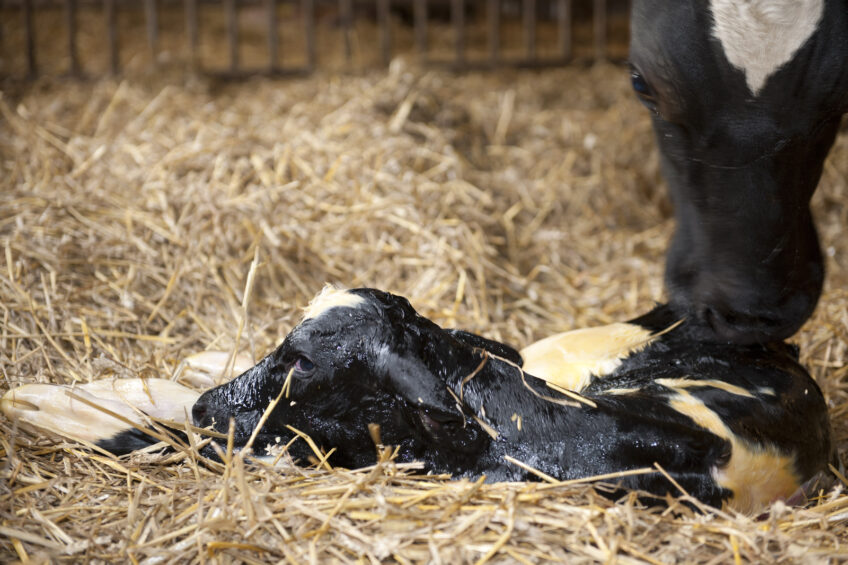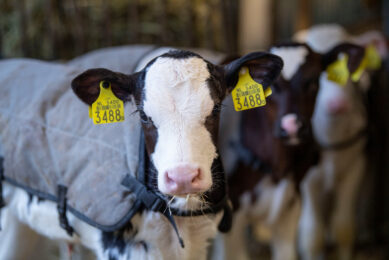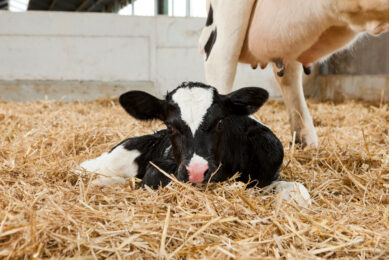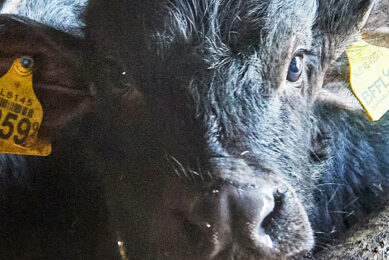More milk in, more milk out

In many dairy operations around the world calves are seen as an expenditure, rather than the ?promising new generation of dairy cows. In an effort to reduce the costs of calf feeding, damages are done to the future production. More milk in at a young age, results in more milk out later on.
Some small adjustments in dairy calf management and feeding could make an enormous difference in the speed of growth and future production, as well as animal welfare for farmers, according to new practical research being conducted in the UK. And it should be quite easy for milk producers to convert their systems to cater for the new strategy if they want to see better results, says researcher Gemma Curtis.
Calves in a chronic state of hunger has repercussions
Calves in the UK are currently reared on ‘least cost’ principles, with minimal milk-feeding and early weaning to solid foods. This has been described by some as maintaining the calf in “a state of chronic hunger.” As well as repercussions on calf health and welfare, human studies suggest that underfeeding the new-born is a major risk factor for metabolic disease in the adult. “I wanted to see what would happen if we allowed calves ad libitum access to milk replacer (MR) during the pre-weaning period instead,” says Curtis, who is convinced that calves need a good start in life if they are to grow into healthy productive animals. And her three-year research project, which has been supported by the Biotechnology and Biological Science Research Council (BBSRC), as well as the University of Liverpool’s Institute of Ageing and Chronic Disease and the Dairy Centre of Excellence of a major international supermarket (Tesco), in a Knowledge Transfer Partnership (KTP) arrangement, seems to have proved her right. The supermarket has promised to ensure that the results will get to the grassroots producers in its group, though it is likely to spread even further afield due to the value of the results.
Calves with free access to milk replacer showed better growth rates
Explaining the details of her study, Curtis says she had divided 100 Holstein calves into two groups of 50 each, with one group fed on restricted MR and feed, while the other group was allowed ad lib access to the milk replacer for the first 12 weeks of their lives. “We kept a close watch on the two groups and noticed that the calves which were allowed to feed ad lib were at one stage having up to 14 litres of MR a day – and there was a big difference in growth.
“I was recording growth, weight, height and body length and circumference, as well as body condition, body composition (using CT scans) and aspects of nutrient metabolism (using blood plasma and serum), among other things all the time – and we found that the ad libitum calves gained between 20% and 30% of their birth weight within the first three weeks, while the calves on restricted feeding gained no weight at all. In fact, during the first two weeks the calves showed a chronic state of hunger. I think that is because their rumens had not developed enough at that stage to extract the energy and nutrition they needed from the hard feed,” states Curtis. She says that the advantage in weight for the calves fed milk replacer ad lib was maintained by all the animals in that group throughout the weaning period and beyond.
In addition, the height and body condition scores of the calves fed ad lib were better than those for the calves on restricted feeding during the project, with the former being taller and having higher body condition scores after the 12 weeks. She expects that this will continue throughout the cows’ lives, with the ad lib calves also expected to reach puberty earlier than the restricted fed ones and produce more milk as adult cows.
Huge milk yield increases
“The research illustrates that allowing unrestricted access to milk replacer from birth means cows can be inseminated quicker, which means both that they will be productive earlier and produce more milk than those reared in the conventional way,” she says. Data from previous studies comparing dairy calves that had been fed increased milk with those on restricted feeding had demonstrated milk yield increases of between 450 and 1400kg during lactation alone.
“The important thing to get across to farmers is that although they may face higher costs for all extra the milk replacer they will need, my research shows that this ad libitum feeding strategy will improve the health and welfare of their cows.
It should also lead to economic gain, thanks to the higher production levels we expect from the adult cows raised in this way. In addition, we expect that the animals raised in this manner will live for longer,” explains Curtis. She adds that a separate glucose metabolism study which was conducted on a subset of 12 heifer calves (six from each group) during this project, had identified a simple intravenous combined insulin glucose test (CGIT) that had the potential to be used in future in a field situation to help farmers spot animals at risk of metabolic disease, which is currently capable of causing major economic losses within the dairy industry. Curtis believes that the results of this knowledge transfer project could have a huge impact on dairy farming, both in the UK and in other parts of the milk-producing world by improving the production potential of cows – it’s just a matter of making a few changes in the early management of dairy calves.
Share best practices
Graham Wilkinson, who is agriculture manager – dairy category for the supermarket’s dairy group, agrees and adds: “The results of this partnership offer us the opportunity to share best practice with our TSDG members and drive improvements through the supply chain.” Wilkinson explains, “This has helped us understand an area which has previously seen little research and in-depth focus. It has enabled us to attribute the potential changes to financial performance which will be a key driver in delivering change throughout the supply-base.”
BBSRC’s chief executive Jackie Hunter adds, “It is great to see industry and academia coming together to find new ways of improving animal welfare and food production. “This is a clear demonstration of the KTP delivering a real impact and benefit for industry and consumers.” And Curtis points out that more information could be forthcoming from the project, because it is still on-going. She explains that all the animals in the study are being kept on within the same cohort, so that their life-time health and performance could be studied, monitored and recorded. These statistics would then be analysed and used to further understand the influence of neonatal nutrition on the adult animals, she said. So, watch this space for further news about the effect of early feeding and neonatal nutrition on dairy calves.
Join 13,000+ subscribers
Subscribe to our newsletter to stay updated about all the need-to-know content in the dairy sector, two times a week.










